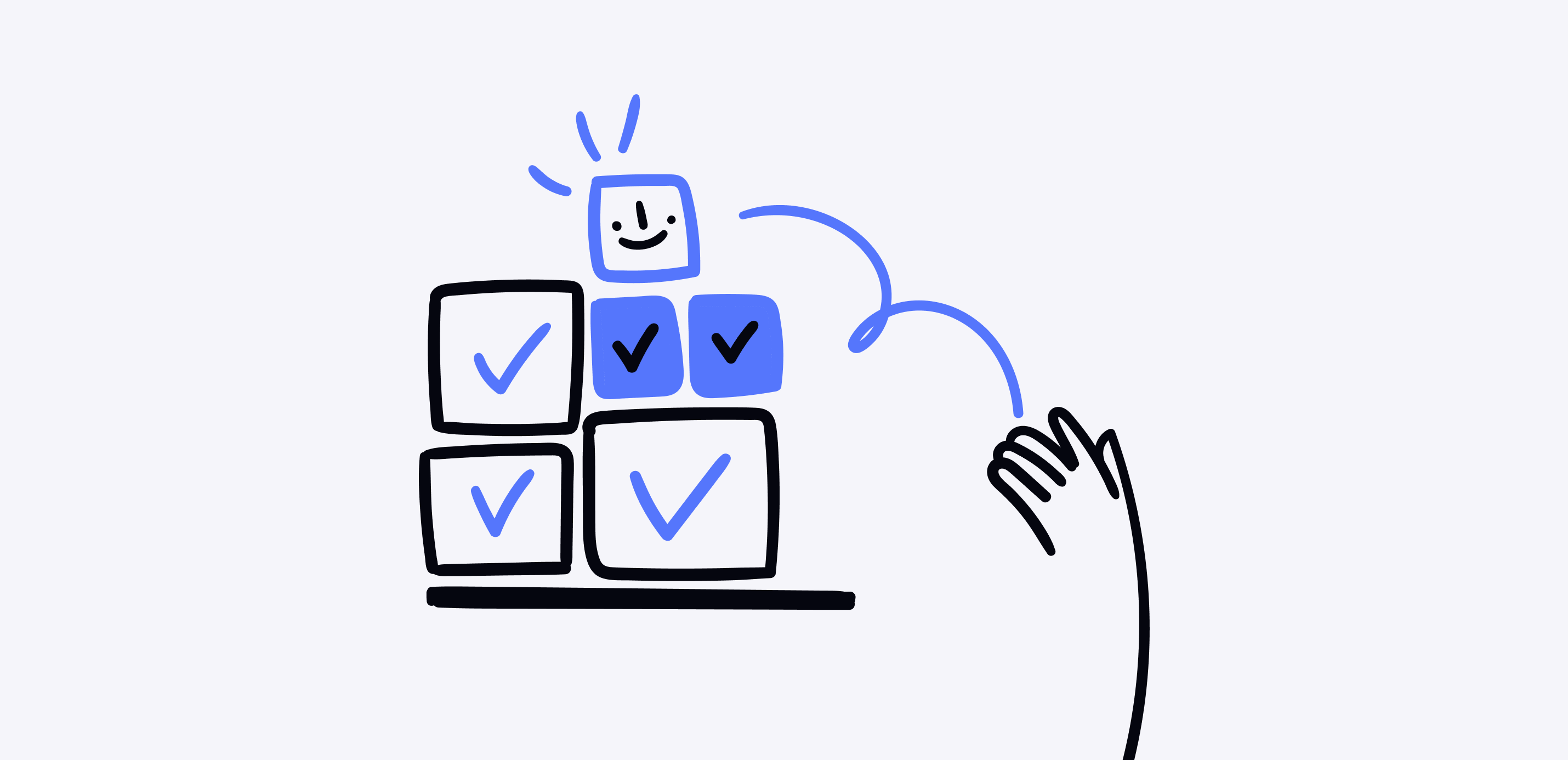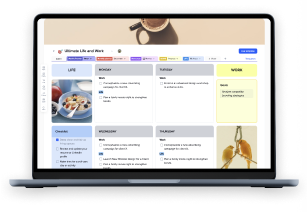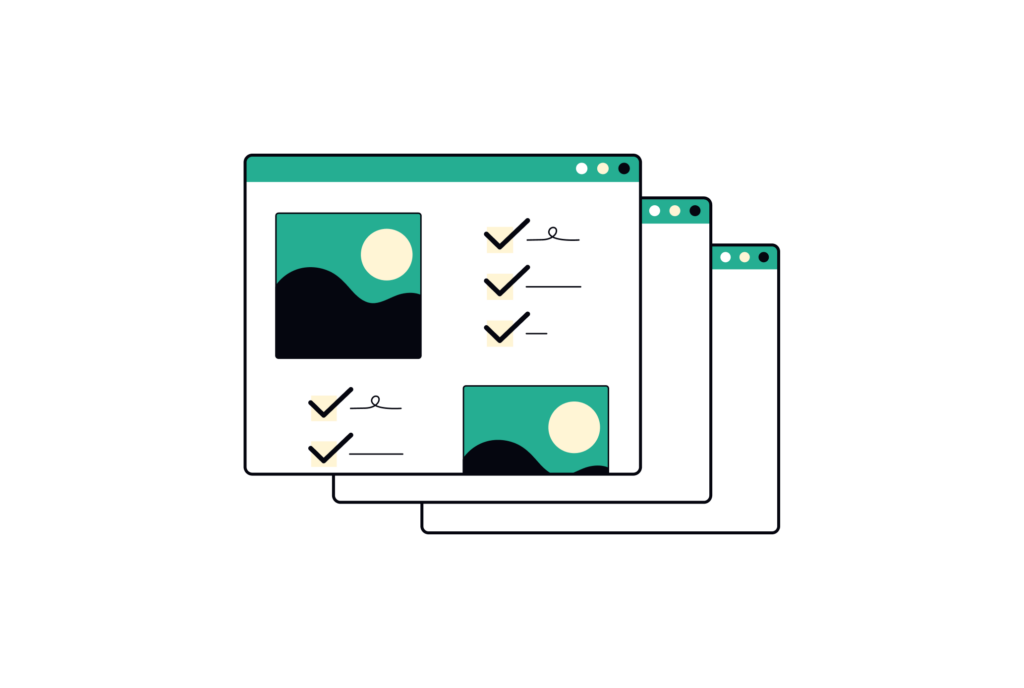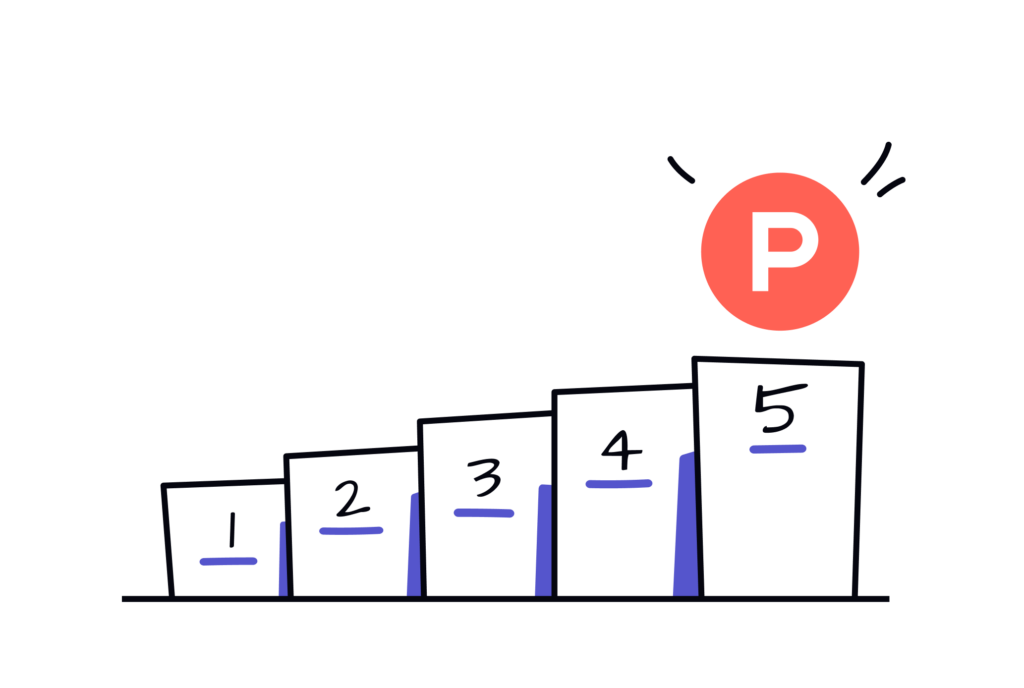In today’s fast-paced world, mastering the art of daily planning is more than a skill – it’s a necessity. The ability to efficiently organize your day, prioritize tasks, and focus on what truly matters can significantly impact your productivity and overall sense of achievement.
With the advent of digital tools like xTiles, optimizing your daily routine has never been easier. This article delves into expert strategies and practical tips for enhancing daily planning, helping you manage your time more effectively and live a more fulfilling life.
Understanding the Value of Daily Planning
Daily planning is more than just a to-do list; it’s a strategic approach to life that aligns your daily actions with your long-term goals. It’s about making the most of your 24 hours, reducing stress, and increasing efficiency.
When you know how to plan your day effectively, whether you use a digital calendar, a simple to-do list, a daily planner, or combine all of these, you set a clear direction, which not only boosts your productivity but also brings you closer to achieving your ambitions and decreases your wasted time.
The importance of daily planning in optimizing productivity cannot be overstated. It’s the foundation upon which successful careers, fulfilling personal lives, and remarkable achievements are built.
Among the myriad of tools available, xTiles stands out as a user-friendly application that significantly enhances daily planning and productivity, offering a seamless interface for managing your tasks and priorities together with other information management purposes.
Establishing a Daily Planning Routine
Consistency is key to establishing a successful daily planning routine. Integrating daily planning sessions into your routine doesn’t have to be daunting, even though for many, it’s quite hard to devote their precious time to a planning process. They would prefer to do it on a run, risking missing good ideas.
Establishing a new habit, which is planning, may take time, yet, at the end of the day, you’re much closer to any of your goals. You will easily determine which task has high priority and which one can be delegated to someone else, you will be able to easily determine an approach for dealing with specific tasks, and you will stay productive no matter the coincidences.
Start by dedicating a few minutes each morning to plan the next day. Let it be a part of your morning routine. While brushing your teeth, think of all the tasks you need to do today. Then, go to your planner and write them down.
Start with tasks you can’t avoid. Schedule your meetings and appointments throughout the day. In the same way, add your usual daily tasks if there is still enough time. Don’t forget about self-growth. And like this, your entire day is planned.
You can put “planning a day” as the first point on your daily to-do list, and you will have one task already completed even though the day only started. It’s a small trick to cheer yourself up.
This habit, over time, becomes a cornerstone for a more organized and productive life. When you learn how to plan your day, you can move to bigger ones and plan your months and years.
Proper planning is a multi-level process, where you need to learn many tricks like time management, time blocking, how to stay motivated when a task is boring, etc.
Building To-Do Lists Aligned with Goals
To truly harness the power of daily planning, break down your long-term goals into actionable tasks. This first step is relevant even if you decide to use a physical planner. It will provide you with a clear picture of what needs to be done.
“To learn a new language” is barely a daily task. However, “to learn 10 new words” would be great progress toward your big goal. It’s so small, it won’t disrupt your daily routine, but after a year you will be a proud owner of a distinctive vocabulary in your new language.
So, you should have a big goal and plan your days around it. Some days you will have more time to devote, some days you will have less. However, keeping in mind your big objective will keep you focused and motivated even when you’re drowning in daily routine.
Important tasks need to be written in a separate category. Yes, even among common daily tasks, there are those that are more important than others. If you mix them with your bigger and more crucial tasks, use color coding to see where your attention should go at the moment easily.
It’s best to divide your personal tasks from your work tasks. Otherwise, your daily to-dos will be too chaotic to work with, and you risk accomplishing less simply because you’re disoriented.
Also, when planning your next day, think about your natural inclinations. If you’re an owl, an 8 AM meeting won’t be something you can handle with ease and show your potential. Most likely, you will spend the whole time dreaming about your bed and coffee and hating yourself for scheduling or agreeing to this terrible meeting.
If a person is easily distracted, they may learn the importance of planning through time constraints. By setting specific deadlines and allocating time for each task, individuals can gradually develop their ability to stay focused and organized.
Setting Daily Priorities
Adopting the practice of having one major daily priority can significantly enhance your focus and productivity. This approach, backed by productivity experts, helps in maintaining clarity and direction, ensuring that each day contributes meaningfully toward your long term goals and overal progress.
A productive day isn’t one where you finish all tasks. You might finish 100 tasks but stay where you are, not a step closer to your goal. Rather, productivity is about making meaningful progress toward your long-term objectives. It’s about prioritizing tasks that align with your goals and have the greatest impact.
Also, try to devote yourself to one task at the moment. This way, you can stay organized and preserve maximum productivity.
Implementing Productivity Strategies
Incorporate proven productivity methods such as Eat the Frog, the Pomodoro Technique, and Time Blocking into your daily planning with the help of xTiles. These strategies, when applied consistently, can transform your daily productivity, helping you to tackle tasks more efficiently and with greater focus.
Let’s take a closer look at what they can give you, once you implement them:
Eat The Frog Technique
This technique, popularized by author Brian Tracy in his book “Eat That Frog! 21 Great Ways to Stop Procrastinating and Get More Done in Less Time,” is based on the idea of tackling your most challenging or daunting task first thing in the morning.
The “frog” represents this one task you would give anything to avoid doing, and the concept is that if you start your day by “eating the frog,” i.e., completing your most important task, the rest of your day will feel easier and more productive by comparison. You will feel the incredible lightness of being when there’s no burden on your shoulders.
This technique emphasizes prioritizing tasks based on their importance rather than their urgency, helping individuals overcome procrastination and focus on tasks that contribute the most to their goals.
The Pomodoro Technique
Developed by Francesco Cirillo in the late 1980s, the Pomodoro Technique is a time management method that utilizes intervals of focused work followed by short breaks to improve productivity and concentration.
The technique involves breaking down work into 25-minute intervals called “Pomodoros,” named after the tomato-shaped kitchen timer that Cirillo used.
After each Pomodoro, there’s a five-minute break, and after completing four Pomodoros, a longer break of 15–30 minutes is taken.
This structured approach helps individuals maintain focus during work intervals while allowing for regular breaks to prevent burnout and maintain motivation. The Pomodoro Technique aims to enhance productivity by minimizing distractions and maximizing concentration during work periods.
What is important about these breaks is that it’s preferable to avoid using your phone to watch a few reels or TikToks. Otherwise, you risk starting the next Pomodoro even more tired than you were when you completed the last one.
Time Blocking & Task Batching
Time blocking is a scheduling technique that involves dividing your day into specific time blocks dedicated to different tasks or activities. A time block duration depends on the specific task itself. Certain tasks, like apartment renovation, need more time than laundry.
Rather than having a to-do list without a specific plan for when tasks will be completed, time blocking allocates specific time periods for different activities, allowing individuals to focus on one task at a time and manage their time more effectively.
For example, rather than responding to emails sporadically throughout the day, a person might allocate a specific time block, such as 9:00 AM to 10:00 AM, to handle their admin tasks at once. Similarly, tasks like making phone calls, conducting research, or completing administrative work can be batched together during separate time slots
Time blocking can be implemented on various scales, from daily schedules to weekly or monthly plans. It helps individuals prioritize tasks, allocate sufficient time for each activity, and maintain a better overview of their time commitments.
This technique encourages individuals to proactively manage their time, reduce multitasking, and improve productivity by dedicating focused periods to specific tasks or goals.
Choosing the Right Planning Tools
The choice of planning tools is crucial in optimizing your daily routine. Whether you prefer to-do list apps, digital calendars, paper planners, or a hybrid approach, the key is to find a system that works for you.
Let’s take a closer look at available planning tools and how they can be combined for maximum productivity.
How to Plan Your Day Using xTiles
xTiles is suitable for all kinds of planning. It combines the advantages of all the previous methods, minimizing their disadvantages.
Its user-friendly interface requires minimum time for onboarding. Customizable options offer solutions for different kinds of plans, whether it’s a game plan, grocery list, or reading list. The drop-and-drag feature assists with easy and quick organization and structurization.
Another advantage is ready-to-use templates. You can find layouts for every kind of planning – daily tasks, critical tasks that need special attention, your daily life, etc.
Also, by using this kind of planning, you can track your stress levels and energy levels to stay productive and stay away from burnout.
You can easily divide your projects into bite sized pieces to deal with smaller tasks at a time, preserving the connections thanks to nested elements.
Aditionally, your planning can involve more than plain text. You can create planners with rich content and widgets to focus better and achieve your goals in an interactive way.
Another advantage is that you can combine a few views. If you like Google Calendar, but it’s functionality limits your productivity or planning style, you can view your to-do list as a calendar to see how much time you have left to complete your most important tasks and schedule and reschedule your tasks wisely and evenly through your week or month.
You can fine-tune your daily plan the way you like with xTiles. A lot of features is about freedom and we strive to make this list of available features even longer to provide you with the ultimate planning tool.
How to Plan Your Day Using Google Calendar
This is the tool you already have. No additional payments, no downloading, etc. Just open and start planning. If you’re an Apple user, you can use your Apple Calendar. The approach is the same.
You plan your days and get notifications when you’re close to an appointment or deadline. However, these digital calendars could be more convenient for long-term goals. You can’t track progress. A task that takes a few days to complete will clutter your calendar, distressing you and causing trouble with finding other tasks.
How to Plan Your Day Using a Physical Planner
This is a traditional approach, tested by millions and generations of active planners. At some point in our lives, usually during school years, everyone was involved in traditional planning.
Many people still prefer this method because they can take very aesthetic notes and they won’t need to learn any new tools since they already know how to write.
However, the drawbacks are significant, too. The fact that humanity has evolved from paper notebooks to planners in mobile devices and notes app proves that not everything can be achieved through paper and pen.
So, what to do? You have a clean piece of paper, and you’re free to do whatever you want. Create a chart to divide your tasks, put your ultimate goals on a separate page, divide all your tasks into four categories, five categories, or how many you wish, etc. What your daily plan will look like depends on your creativity and information organizational skills
Overcoming Challenges and Staying Productive
It’s normal to encounter obstacles in your daily planning and productivity journey, especially if you’re new to planning.
Overcoming procrastination, managing distractions, and mastering time management are all part of the process. With persistence and the right strategies, these challenges can be navigated successfully.
- Set clear goals
- By setting clear goals, you’ll have a precise understanding of what needs to be accomplished and when it’s achieved.
- If a task is big and time-consuming, break it into manageable steps.
- For large, time-consuming tasks, break them into smaller, manageable steps. This approach frees up time for other activities and rest.
- Stay flexible
- It’s natural for plans to evolve. Embrace changes that don’t align with your expectations. The perfect plan is the one that can be adapted to your evolving needs.
- Plan your breaks
- Incorporate short breaks into your schedule to prevent burnout and sustain high energy levels throughout the day. Consider using the Pomodoro Technique to ensure adequate, well-deserved rest.
- Seek support when needed
- Don’t hesitate to seek help or delegate tasks if you’re feeling overwhelmed. Collaboration and support can lighten your workload and enhance productivity.
- Celebrate your progress
- That’s how you send your brain a message that the activity you’ve just finished was pleasant. Over time, even daunting tasks will become less painful if you know that there’s a reward afterward.
- Practice Self-Care
- It’s important to plan your day with self-care in mind. One of the most common issues with daily planning is people being too hard on themselves. Long deep work sessions are great, but having enough rest is even greater. Additionally, a tired person can’t be a productive person. That one task can wait if you don’t feel like doing it.
Daily planning differes from long-term planning. Don’t forget that your plan for a day is only a part of your life plan, it’s a small brick to build your dream.
Daily planning has to be about easiness and automation, and that is where digital tools come to play. For example, if you have recurring tasks, you won’t need to write them down every single day. Your planning tool will do it for you in a second.
How to Plan Your Day in a Few Steps
Let’s assume it’s Sunday evening, and you have a long and hard week ahead of you, not to mention the need to survive through Monday. If you have no idea where to start to get through this pile of oncoming tasks, the week is going to be even harder. So, we need a plan. Let’s create it, then.
Additionally, you can learn more about how to create plans for various situations and types of tasks.
Think about your past few years. Can you remember weeks or days when you were at the top of the world? You may think it was just good luck. The universe threw tasks at you in the right order. However, it was your merit. You arranged everything in a way that worked. We need to do it one more time to learn this mechanism.
Let’s assume it’s Sunday evening, and you have a long and hard week ahead of you, not to mention the need to survive through Monday. If you have no idea where to start to get through this pile of oncoming tasks, the week is going to be even harder. So, we need a plan. Let’s create it, then.
Create a To-do List With Everything You Need and Want to Accomplish
- To have a day that’s both productive and easy to manage, start by setting aside time for rest in your schedule. This rest time is very important and shouldn’t be skipped.
- Then, decide on the most important task of the day – this is your main focus. After that, add in the things you must do and can’t put off, like a doctor’s appointment or a language lesson. These important tasks help give your day structure.
- Next, look at how much time you have left. Use this time for smaller tasks that still need to be done. Spread these tasks out so they don’t pile up.
- To make things easier on yourself, group similar tasks together. For example, put all your communication tasks or all your errand tasks in one block. This helps you switch between tasks more smoothly and makes your day more efficient, productive, and balanced.
Stick to Your Plan
For many, this part is the hardest one. People may create a perfect plan, but they keep losing focus, moving in the other direction from progress. Why is this so?
Sometimes, having a plan might feel like already having a productive day, even though nothing is done yet. That’s why to-do lists are so effective here. You will need to check boxes before you can say that a task is finished.
However, if at the end of the day, there’s a task you couldn’t finish due to various reasons, don’t worry. After all, it’s only your daily plan, not your bucket list. Take it easy. There’s still plenty of time tomorrow.
Reflecting and Fine-Tuning
Regular in-depth reflection and evaluation of your daily planning practices are crucial for ongoing progress and development. Learning from your mistakes and successes is the best way to develop new skills and get insights into how the world works for you.
It’s important to be open-minded and experiment with various strategies and tools to fine-tune your schedule effectively. Embrace flexibility and maintain a willingness to adapt, as they are key elements in achieving your goals, maintaining focus, and efficiently completing tasks.
Focus on what brings you joy, not only checkmarks to your to-do list and plan your day accordingly to achieve what is set.
Conclusion
Effective daily planning is within your reach. By implementing the strategies discussed (even a few of them because you need to start somewhere) and utilizing tools like xTiles, you can significantly boost your productivity and efficiency.
While taking nothing except for a few minutes of your time, daily planning brings multiple benefits. You will be able to complete more tasks, have more free time, deal with activities you don’t like easier and quicker and move toward your big objectives consistently, overcoming challanges and traps.
Start today and transform the way you organize your day, achieve your goals, and, ultimately, how you live your life.
FAQ
How do I plan my daily routine?
To effectively plan your daily routine, begin by establishing clear priorities, breaking down tasks into manageable steps, and strategically scheduling them based on their importance and urgency. Consistently revisiting and adjusting your plan ensures adaptability and optimal productivity.
How do I plan my perfect day?
Crafting your perfect day involves identifying your top priority, allocating dedicated time for essential tasks, and incorporating intervals for breaks and self-care to maintain balance and well-being. By aligning your activities with your values and goals, you create a fulfilling and purpose-driven daily plan.
How do I make a daily plan?
Crafting a comprehensive daily plan involves utilizing tools like xTiles to meticulously list tasks, establish priorities, and allocate focused work sessions. By strategically blocking time for tasks and maintaining a clear vision of your objectives, you empower yourself to accomplish both immediate and long-term goals with efficiency and purpose.
What is the meaning of a daily plan?
A daily plan serves as a strategic roadmap outlining your intended accomplishments for the day while aligning them with your overarching goals and aspirations. It’s a structured approach to managing your time and resources effectively, fostering productivity and progress toward your desired outcomes.
What is the perfect daily schedule?
The perfect daily schedule is a personalized framework that strikes a harmonious balance between productivity and well-being, tailored to your unique needs and aspirations. By integrating time for work, rest, personal growth, and leisure activities, you cultivate a fulfilling and sustainable routine that supports your holistic development and success.


